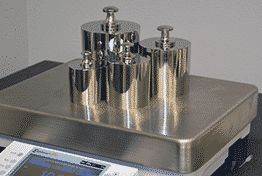Metrology Glossary: Average Piece Weight (APW)
What Is Average Piece Weight (APW)?
Average piece weight (APW) indicates the mean of the weight carried by each individual item within a specified set of items. This is done by dividing the cumulative weight of the complete set by the total count of individual pieces it contains. APW serves as a valuable metric in various applications, facilitating assessments of uniformity and distribution of weights within the batch.
What Is Average Piece Weight (APW) Used For?
Inventory Management:
- Stock Control: APW ensures accurate inventory tracking, aligning physical and theoretical levels.
- Order Fulfillment: By verifying consistent item weights, APW prevents discrepancies and ensures precise order fulfillment.
- Cost Control: APW identifies weight inconsistencies, preventing losses from underweight or overweight items.
Production Quality Control:
- Production Monitoring: APW provides real-time weight consistency measures, enabling early detection and correction.
- Defective Product ID: Deviations from APW signal potential defects, facilitating proactive quality control measures.
- Efficiency Optimization: APW ensures uniform weight distribution, minimizing waste and maximizing yield.
Packaging and Distribution:
- Batch Packaging: APW streamlines the creation of uniformly packed batches for compliance and accurate labeling.
- Cost-Efficient Shipping: APW optimizes shipping costs by maintaining consistent item weights.
- Space Optimization: APW predicts weight and space requirements, optimizing warehouse utilization.
Other Applications:
- Pharmaceutical Industry: APW guarantees precise medication dosing by validating the uniformity of individual pill weights.
- Food Industry: APW contributes to sustaining product quality and consistency by ensuring accurate weight across various food items.
- Recycling Industry: APW plays a crucial role in sorting and classifying recyclable materials based on their individual weights.

Related Terms
In the context of scales and scale systems, the term "count" or "counts" refers to the numerical value representing the quantity of time intervals that are accumulated by the dual-slope...
A checkweigher functions as an automated or manual device used for gauging the weight of packaged goods, verifying their conformity with predetermined weight parameters....
A counting scale is a tool capable of automatically recording the quantity of individual objects positioned on it by gauging their mass....










